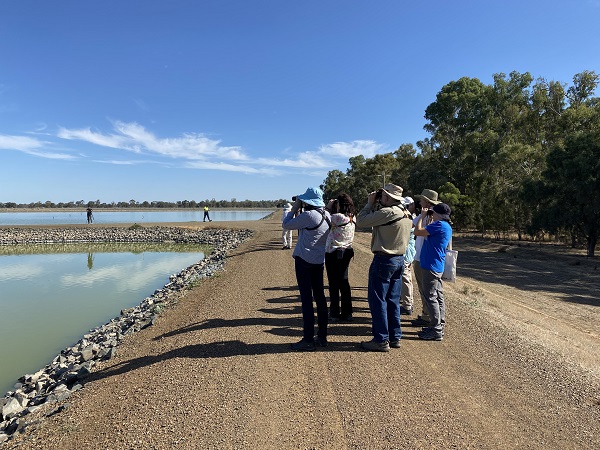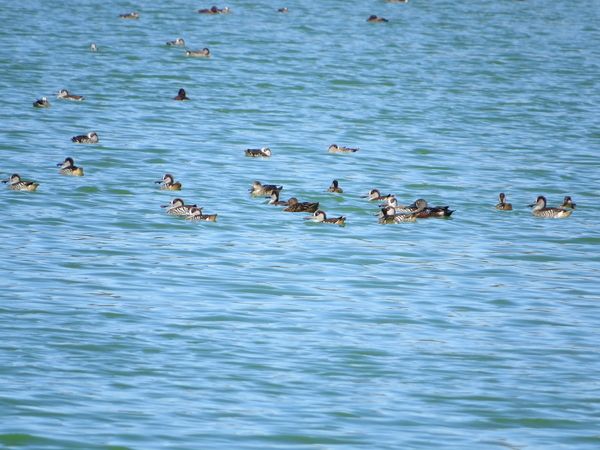Enthusiasts, experts and emerging birdwatchers came together for a workshop in northern Victoria to begin a Waterbird Citizen Science Project.
The projects aim is to collect useful data to help inform the Wetland Monitoring and Assessment Program (WetMAP). WetMAP is a state-wide monitoring program, funded by DELWP, designed to assess ecological responses of vegetation, waterbirds, frogs and fish to the delivery of water for the environment in Victorian wetlands.

Citizen Scientists identifying birds at Shepparton Waste Water Treatment Plant, by VEWH
The waterbird citizen science component of WetMAP is a collaboration between the Arthur Rylah Institute, BirdLife Australia (including Murray Goulburn BirdLife), the Goulburn Broken Catchment Management Authority (CMA), and citizen scientists eager to find out more about how waterbirds respond to water for the environment.
Nearly 50 locals came along to the workshop in Shepparton in late February 2020 to find out about the:
- WetMAP program
- how and where water for the environment is delivered in the area
- how to identify waterbirds, and
- how to participate in the bird citizen science monitoring.
“It was fantastic to see so many people come along to hear about what the WetMAP bird monitoring work is doing, as well as consider participating in our new citizen science project,” ARI’s Pam Clunie said.
“Having citizen scientists involved in collecting data has multiple benefits. We gain more scientific information to support effective management of water for the environment. Participants hopefully find the experience rewarding, interesting and informative too!”
“It gives us an opportunity to explain the management of water within wetlands, share our knowledge of waterbirds and as a bonus build stronger connections between scientists and community members.”
This bird citizen science project is currently a pilot, and we are particularly keen for participants to visit a number of sites already being monitored by WetMAP bird scientists, including Black, Gaynor, Moodie and Reedy swamps and Green Lake in the Goulburn Broken catchment.
“Waterbirds have a range of habitat preferences and as a result, occupy wetlands at different times of the inundation and dry down period.” BirdLife Australia’s Bradley Clarke-Wood said.
Some birds require deep open water for swimming and diving like Hardhead diving ducks, while other birds, like Sharp-tailed sandpipers, require mudflats for foraging, which only become exposed when water levels drop.
“Birders across the country provide valuable insights into the ecology of Australia’s waterbirds. Members of our organisation have collected critical data on the Australasian Bittern, for example, which is an endangered wetland-dependent species. We are looking forward to working with citizen scientists to gather more information on which bird species are using the swamps at different times during the wetland wetting and drying cycles.”
Armed with plenty of knowledge and bird identification tips the group headed to Shepparton Wastewater Treatment Plant to test their identification skills. The group counted 14 species including some threatened ones! A juvenile White-bellied Sea-Eagle and Blue-billed ducks, both currently listed as endangered in Victoria, spiked excitement for all!
To find out more head to: https://www.ari.vic.gov.au/research/people-and-nature/birding-is-better-when-we-work-together
Pink eared Ducks, Australasian Shovellers, Grey Teal and a Hardhead at Shepparton Waste Water Treatment Plant, by ARI
